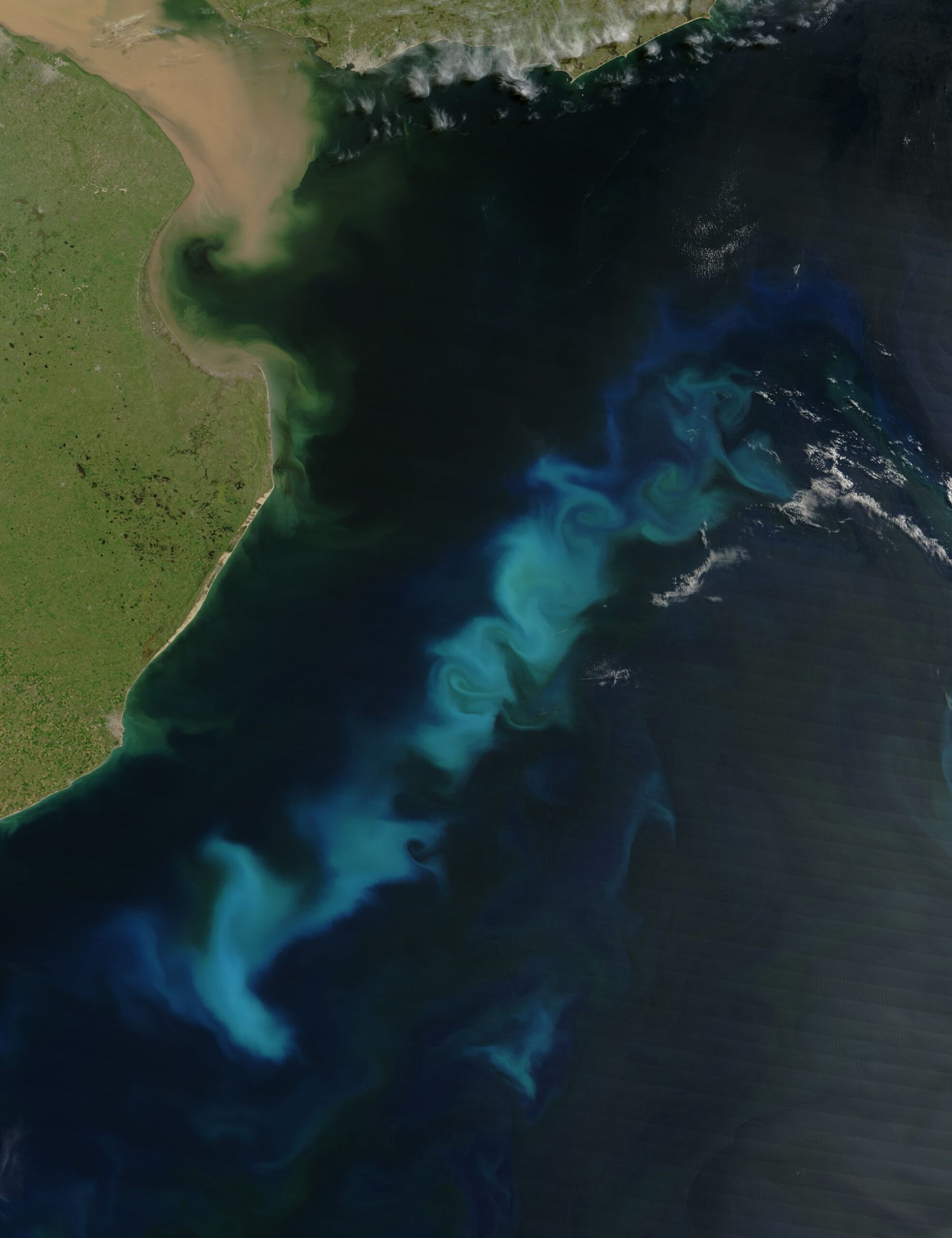In the past few years, industrial-scale atmospheric carbon removal has moved from the fringes of respectable discourse to a mainstream part of the climate policy conversation. The 2022 Inflation Reduction Act, with its tax credits of up to $180 per ton for directly captured and safely sequestered carbon dioxide, was a key driver of this shift. The idea that we must develop a new industry to capture carbon partly comes from accumulating evidence that CO2 drawdown by natural lands, especially forests, will not be adequate to the task (Earthward, August 3). There is little doubt, however, that lobbying by fossil fuel interests also played a role in enabling the IRA’s largesse, since carbon capture and storage technology allows them to promote the (plainly false) notion that oil and gas can be safely burned into the indefinite future.
Fossil fuel lobbyists aside, we really will need industrial carbon capture – if not to compensate for a sluggish renewable energy transition, then certainly later to return the atmospheric CO2 concentration back to a level consistent with a healthy climate. But a consequence of the IRA law is that it has given a big boost to one particular drawdown technology that not all experts think is the best choice. Direct air capture coupled to safe geologic sequestration does have a lot going for it, as it can build on the better-established methods for CO2 capture from industrial smokestacks. But DAC is also still very expensive, even with the big tax credits, and pulling CO2 out of the dilute atmosphere requires an enormous amount of energy.
Among the alternatives to DAC are a suite of ocean-based carbon removal methods that many climate scientists think are worth exploring. Oceans already play a major role in atmospheric carbon removal as part of Earth’s natural carbon cycle: they absorb about 25-30% of the carbon dioxide emitted by humans each year. But this benefit comes at a price, because dissolving CO2 in the ocean leads to chemical reactions that increase acidity and cause the hard calcium carbonate shells of marine organisms to begin to dissolve. Already human activity has increased ocean acidity by 30%, and many fear that a worsening of this problem with continued fossil fuel burning could severely impact biodiversity by leading to increased rates of species extinction. Indeed, the geologic record contains ample evidence of mass extinctions from ocean acidification caused by meteor impacts in Earth’s deep past. Fortunately, none of the proposed ocean CO2 removal processes are considered likely to worsen this problem, and several may actually help ameliorate it.
Perhaps the most prominent of the ocean based carbon sequestration methods is iron fertilization. This exploits a naturally occurring process known as the biological carbon pump, which transfers carbon from the ocean’s surface to the deep sediments, thereby burying it for hundreds of years or longer. The pump works through phytoplankton, which are single-celled photosynthetic organisms that inhabit the ocean surface. Phytoplankton directly use the energy of sunlight to drive their life processes, while also taking up CO2 from the atmosphere as a carbon source, “fixing” it into sugars, fats and proteins in the cell. When the cells die they sink into the deep ocean, providing one of the major mechanisms by which carbon is physically removed from surface waters and thus prevented from recycling back into the atmosphere over short time periods. The pump is of great significance in maintaining climate-stable levels of atmospheric CO2: studies suggest that, were it to cease operating, CO2 would increase by several hundred parts per million over a timeframe of centuries. That is enough to generate catastrophic levels of global warming going well beyond climate tipping points.
Phytoplankton growth in the oceans is limited by the very low abundance of iron in chemical forms useful to the cells. This has given birth to the idea that it might be possible to artificially seed some parts of the ocean with iron-rich dust, producing phytoplankton blooms that could accelerate the action of the natural biological pump. There is some evidence to suggest that the 1991 Mount Pinatubo volcanic eruption offers a natural analog demonstrating that the approach could work at large scale. It is well-established that this eruption generated a large increase in atmospheric aerosols, causing worldwide cooling of about 1°F that lasted several years. This is already offered as a good model for how artificial cooling using sulfur aerosols could work (see Earthward, June 29, on solar geoengineering). Less well established, but still plausible, is the notion that iron-rich dust from the same eruption created oceanic phytoplankton blooms that may have significantly slowed the accumulation of atmospheric CO2 in the following year. The clearly observed “blip” in CO2 buildup following the eruption could have other causes, though, and regular satellite monitoring of blooms was not yet in place in 1991. This limits our confidence in the Pinatubo eruption as a good natural analog, though the connection remains intriguing and is still the subject of informed speculation in the scientific literature.
Last year, the National Academy of Sciences released a comprehensive report assessing the state of the art for six potential approaches to ocean carbon removal. These include artificial upwelling of deep, nutrient-rich waters to stimulate surface blooms, large-scale seaweed farming coupled to sinking of the seaweed into the deep ocean, the protection and restoration of marine ecosystems, and several distinct chemical and electrochemical approaches that can lock CO2 into other dissolved forms, make the seawater more alkaline, and promote CO2 uptake from the atmosphere. However, ocean iron fertilization is distinctive because, among all these, it is the only approach that has already been systematically investigated. From 1993 to 2009, no fewer than thirteen open-ocean experiments on iron fertilization were conducted by a variety of research teams, producing a much more extensive knowledge database compared to the other approaches.
Iron is a “micronutrient” needed by phytoplankton (and most other organisms) in only small quantities, and one clear finding from these experiments is that, as a consequence, very little is required to stimulate significant ocean surface blooms. Iron is also an abundant and inexpensive mineral, making the overall fertilization process cost-efficient and very low-tech, with the main expense being acquisition of the mineral in a suitable form and its transport to ocean sites rich in “macronutrients”, like phosphorus and nitrogen, that must be abundant to support cell growth. Well-known preferred regions include the Southern Ocean around Antarctica, the equatorial Pacific, and the Gulf of Alaska. The energy requirements for ocean iron fertilization are also extremely low, since carbon removal is simply and directly powered by natural sunlight. The contrast with the expensive, energy-intensive direct air capture process could hardly be more stark.
While the field experiments conducted so far clearly showed that iron fertilization works to significantly expand phytoplankton blooms, these studies were also limited in many ways. Most of them looked only at the growth of the blooms, but did not also examine whether they resulted in enhanced sinking of dead cells to depths below the surface carbon cycle. In fact, only one of the thirteen studies offered good evidence that the blooms indeed lead to enhanced carbon sequestration into the deep ocean. Another major limitation was the small physical extent of the studies, which covered surface area of 25 to 300 square kilometers – too small to draw reliable inferences about what might happen at the larger scales needed for the approach to make a real difference. Nonetheless, further studies seem well-justified based on computer modeling of how well the approach could scale up. Both the 2022 National Academy of Sciences study and a different 2019 synthesis by a group of UN experts suggested that sequestration of up to 1 gigaton (Gt) of CO2 per year is not unreasonable, with some estimates in the literature going as high as 3-5 Gt per year, a very significant augmentation of the 5-12 Gt/year that occurs naturally. For comparison, climate models project that about 10 Gt/year of additional CO2 sequestration is needed by mid-century to support net-zero emissions and limit warming to 1.5-2°C (we are presently sequestering well under 1% of that.) If ocean iron fertilization really has potential to provide 10% or more of what is needed at low cost, as our best science suggests, then investing in more research should be a no-brainer.
The NAS synthesis suggests a number of detailed questions to be further examined by computer modeling and experimental field work, including varying the amount and chemical form of the added iron, the method of its application on the surface waters (continuous or pulsed), and the abundance of other necessary nutrients. They also suggest experiments to carefully assess how deep a carbon-rich particle (a dead cell) has to sink before it passes the point of no return – information that could be crucial to informing which parts of the global ocean are best targeted. Also recommended are investigations of ecological effects that come under the rubric of “nutrient robbing”: the expansive blooms take macronutrients away from the surrounding ecological web, with potential cascading effects on biodiversity and other larger-scale impacts. Finally, the NAS suggests studies on social attitudes toward this and other potential ocean geoengineering approaches, especially since the earlier field experiments generated substantial opposition from the World Wildlife Fund and other groups. Given the widespread concern about ocean acidification, it is also important to communicate that ocean iron fertilization does not worsen this problem.
The NAS also estimates the cost of the research program that would fulfill this agenda, including scaling up the size of experimental ocean test sites by factors of 100 or more to more closely mimic actual later deployment. They suggest that an allocation of about $300 million would suffice, covering field site, laboratory and computer modeling. This is a drop in the bucket compared to hundreds of billions that the US has already invested in the energy transition, yet Congress has not yet seen fit to authorize the outlay. The National Oceanic and Atmospheric Administration does include ocean carbon sequestration in its research agenda, and described potential research areas in a white paper published in May of this year. In September, the agency announced $34 million in funding for two dozen projects on marine carbon removal, but they span the full gamut of approaches, with only a small fraction dedicated to iron fertilization. It appears that NOAA, at least so far, may not appreciate how much pilot work has already been done, and has yet to heed the NAS’s advice for more dedicated efforts. Congress, of course, could step in at any time to remedy this with a targeted allocation that would give the research the boost that it clearly deserves. Healthy climate advocates who recognize the potential of this work should take note.
___________________________________
https://cdn.catf.us/wp-content/uploads/2022/08/19102026/carbon-capture-provisions-ira.pdf
https://www.iea.org/energy-system/carbon-capture-utilisation-and-storage/direct-air-capture#
https://www.carbonbrief.org/guest-post-the-oceans-are-absorbing-more-carbon-than-previously-thought/
https://oceanographicmagazine.com/news/fossil-study-ocean-acidification/
http://www.gesamp.org/publications/high-level-review-of-a-wide-range-of-proposed-marine-geoengineering-techniques
https://www.peterfiekowsky.com/resources
https://www.frontiersin.org/articles/10.3389/fmars.2019.00022/full
https://sciencecouncil.noaa.gov/wp-content/uploads/2023/06/mCDR-glossy-final.pdf

